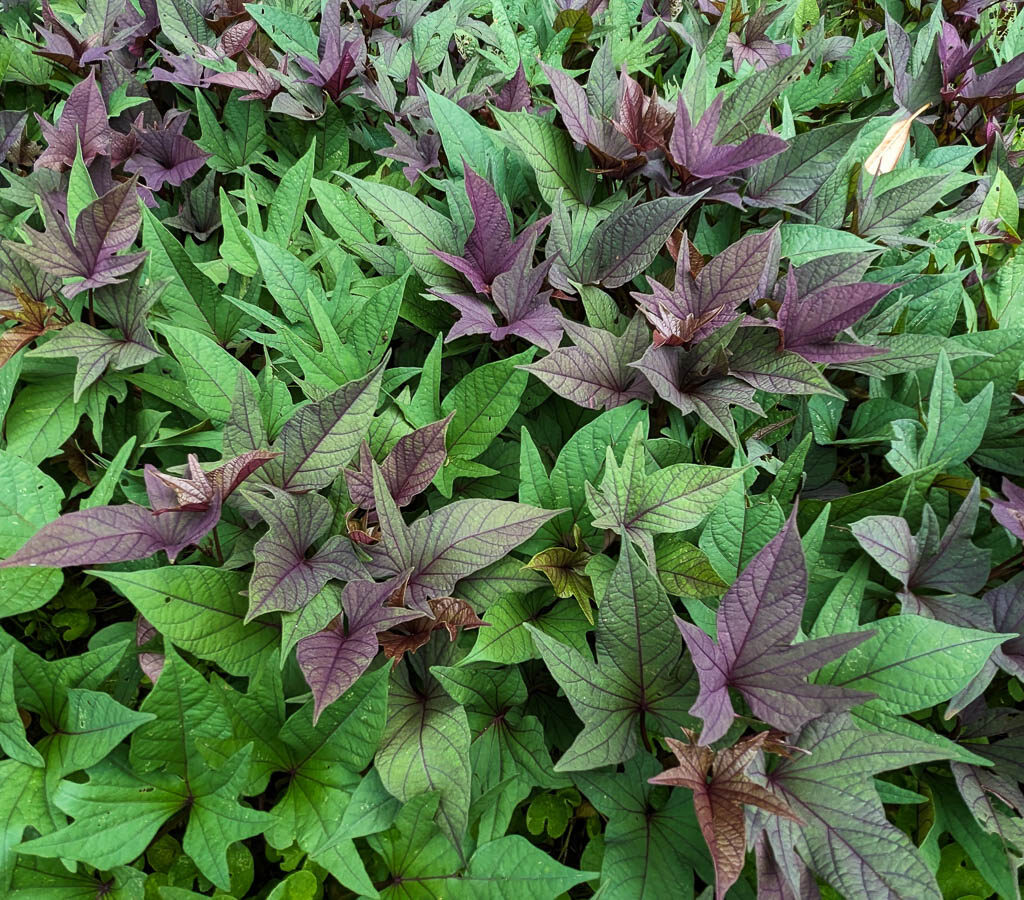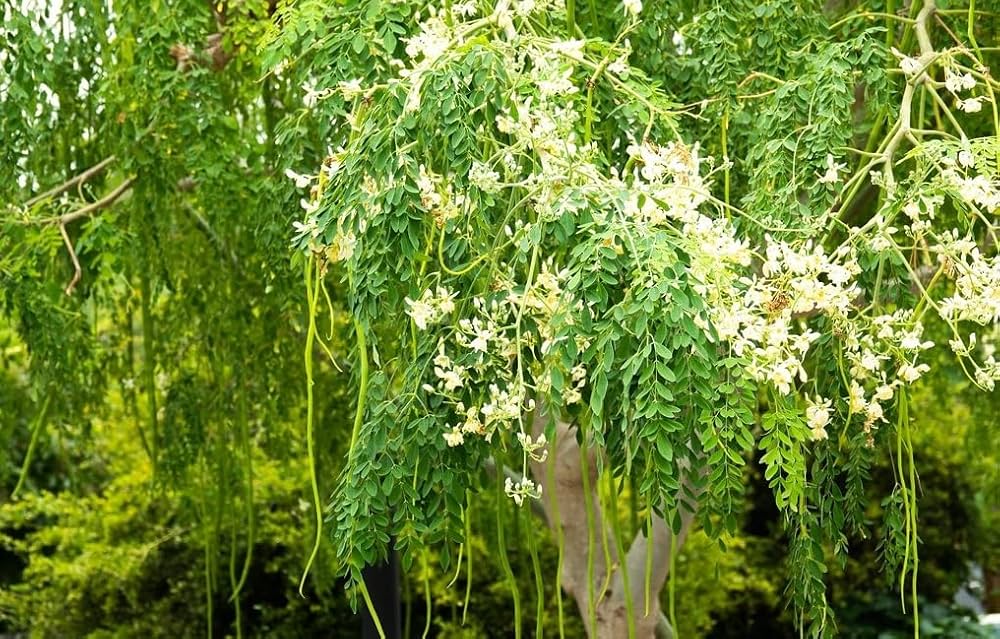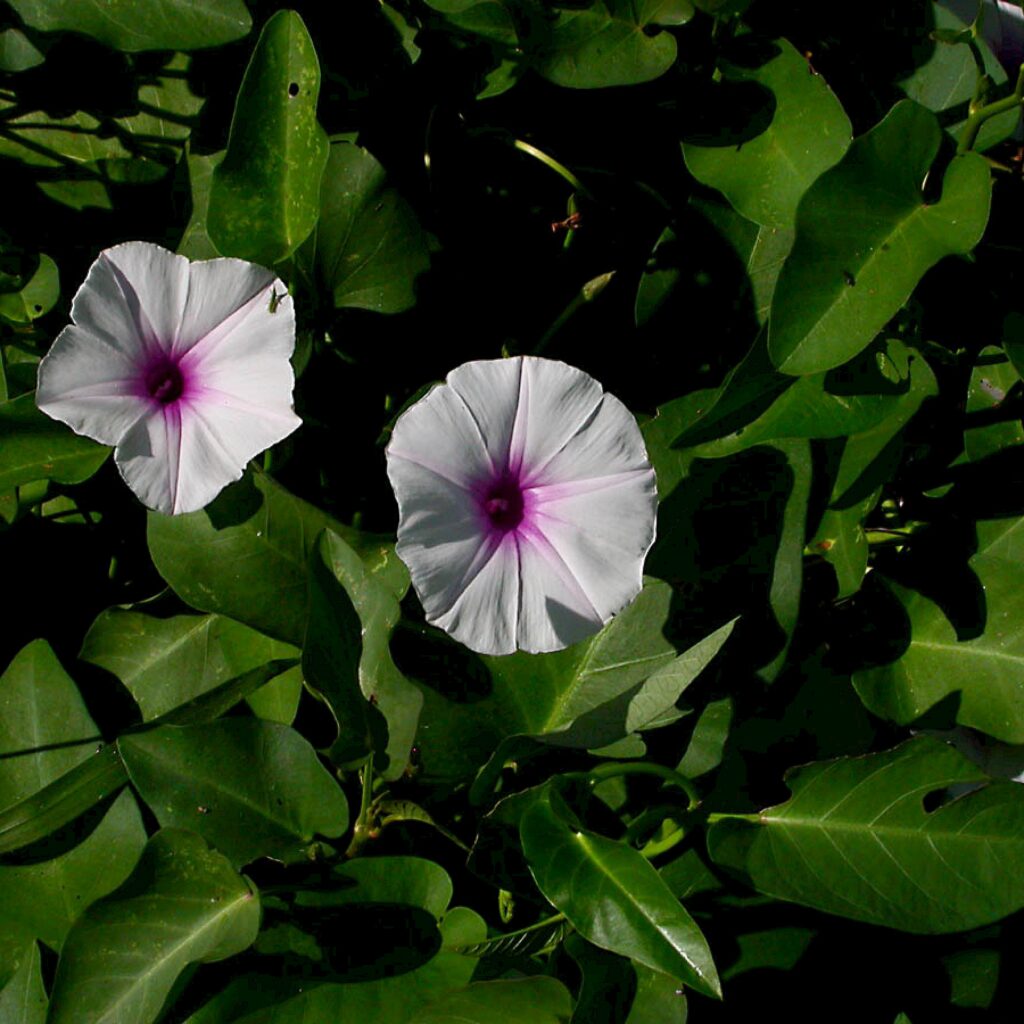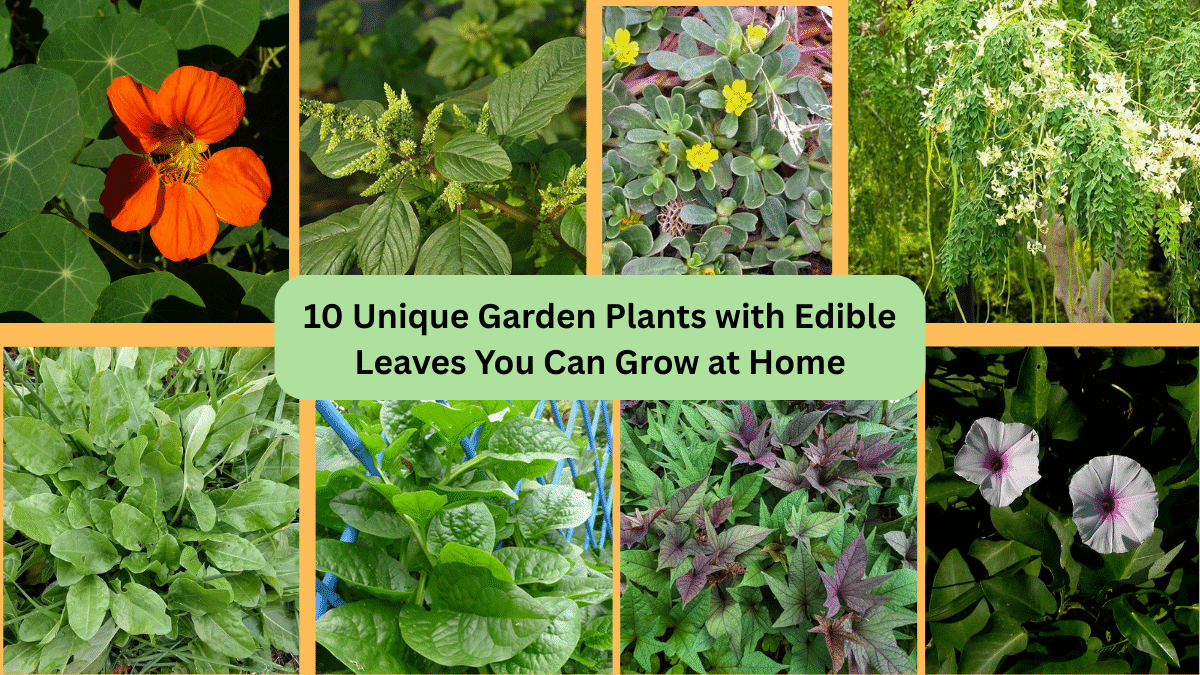Growing your own food doesn’t have to mean sticking to the usual tomatoes, carrots, or herbs. Many beautiful and unique garden plants offer edible leaves you can harvest right from your backyard, patio, or balcony. These plants not only add visual interest to your garden but also provide delicious, nutrient-rich greens for salads, stir-fries, and teas. Ready to add something different to your edible garden? Here are 10 unique plants with edible leaves you can easily grow at home.
1. Malabar Spinach (Basella alba)

Malabar spinach isn’t a true spinach, but its thick, glossy leaves are a fantastic substitute, especially in hot weather. This fast-growing, climbing vine thrives in warm, humid conditions and looks stunning with its deep green foliage and red or green stems. The leaves are slightly mucilaginous, making them ideal for soups, stir-fries, and curries. Malabar spinach grows beautifully in containers or garden beds with a trellis for support. It’s high in vitamins A and C, iron, and calcium, making it as nutritious as it is ornamental.
2. Sweet Potato Leaves (Ipomoea batatas)

While most people grow sweet potatoes for their tubers, the leaves are equally valuable and delicious. Sweet potato leaves have a tender, spinach-like texture with a mild, slightly sweet flavor. Rich in antioxidants and vitamins A and C, they’re excellent sautéed, steamed, or added to soups. These vining plants thrive in warm weather and can be grown in garden beds or large containers with plenty of sunshine. Regular harvesting of the leaves encourages new growth and keeps the plant healthy.
3. Moringa (Moringa oleifera)

Often called the “miracle tree,” moringa produces nutrient-packed leaves that are prized for their health benefits. High in protein, calcium, and iron, moringa leaves have a slightly peppery, earthy taste, perfect for smoothies, salads, and stir-fries. Moringa grows best in warm, sunny climates and can be cultivated in containers in cooler regions. Its delicate, fern-like foliage adds a touch of tropical charm to your garden. Frequent trimming encourages leaf production, ensuring a steady supply of this superfood throughout the growing season.
4. Amaranth (Amaranthus spp.)

Amaranth is a strikingly beautiful plant with broad, colorful leaves that are also edible and nutrient-rich. The leaves, tender and mild with a hint of earthiness, are fantastic in stir-fries, soups, and salads. They’re packed with protein, calcium, and iron. Amaranth thrives in full sun and well-drained soil and grows quickly in containers or beds. Beyond its culinary value, it’s also a decorative addition to the garden with its vivid green, purple, or red foliage and feathery flower spikes.
5. Nasturtium (Tropaeolum majus)

Known for their bright, cheerful flowers, nasturtiums also produce peppery, edible leaves that add a zesty kick to salads and sandwiches. The young leaves are tender and mildly spicy, somewhat like watercress. Nasturtiums grow well in poor soil and full sun, making them low-maintenance and ideal for containers or hanging baskets. Both the leaves and flowers are edible and packed with vitamin C. They also act as natural pest repellents, making them a beautiful and practical companion plant in vegetable gardens.
6. Sorrel (Rumex acetosa)

Sorrel is a tangy, lemony green with slender, arrow-shaped leaves that bring a bright, citrusy flavor to soups, sauces, and salads. It’s one of the easiest perennial greens to grow at home, thriving in full sun to partial shade and moist, well-drained soil. Sorrel produces fresh, tender leaves from spring through fall and returns year after year. It’s particularly rich in vitamin C and iron. The plant’s zesty leaves are a refreshing addition to mixed greens or can be blended into creamy soups.
7. Chaya (Cnidoscolus aconitifolius)

Also known as tree spinach, chaya is a hardy, fast-growing shrub native to Central America. Its large, maple-like leaves must be cooked before eating to remove natural toxins, but once boiled, they taste much like spinach and are packed with calcium, iron, and vitamin C. Chaya thrives in warm climates and is drought-tolerant, making it a resilient choice for backyard food forests or edible borders. Regular pruning encourages fresh, tender leaf growth and keeps the plant manageable in small garden spaces.
8. Culantro (Eryngium foetidum)

Culantro is a lesser-known culinary herb with long, serrated leaves that offer a bold, cilantro-like flavor even stronger than its popular cousin. It thrives in warm, shady spots, making it perfect for growing under taller plants or in shaded containers. Culantro leaves can be chopped and added to soups, stews, and marinades. It’s a staple in Caribbean, Latin American, and Southeast Asian cooking. The plant is easy to care for and will reseed itself if allowed, providing a continuous crop.
9. Purslane (Portulaca oleracea)

Purslane is a succulent, ground-hugging plant with small, fleshy leaves that have a crisp texture and a lemony tang. It’s often considered a weed, but it’s a highly nutritious edible plant rich in omega-3 fatty acids, vitamins A and C, and iron. Purslane thrives in sunny, dry conditions and requires almost no maintenance, making it an ideal addition to rock gardens, edible borders, or container arrangements. The tender young leaves are delicious in salads or lightly sautéed with garlic and olive oil.
10. Water Spinach (Ipomoea aquatica)

Also known as kangkong, water spinach is a fast-growing, semi-aquatic plant popular in Asian cuisine. Its tender, hollow stems and pointed leaves are perfect for stir-fries, soups, and salads. Water spinach thrives in moist, sunny areas and grows well in containers or shallow water-filled beds. Regular harvesting encourages bushier growth. The plant is rich in iron, calcium, and vitamins A and C. Its sprawling habit and lush greenery make it a visually appealing and highly productive addition to edible gardens.





Leave A Comment